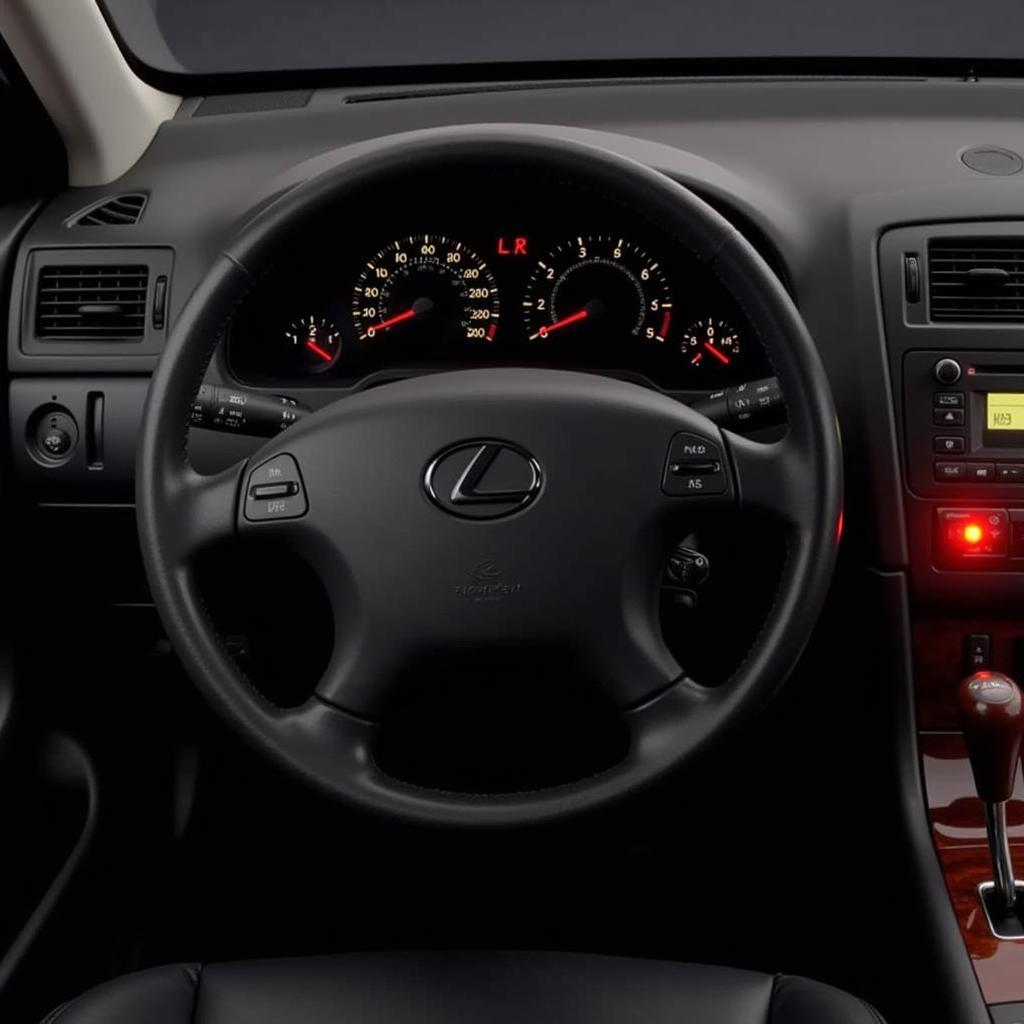The dreaded brake warning light illuminates your 2001 Lexus ES300’s dashboard, accompanied by a tire pressure warning. This scenario is a common concern for ES300 owners, and understanding the underlying causes and solutions can save you time, money, and potential headaches. This comprehensive guide will walk you through diagnosing and addressing these issues, empowering you with the knowledge to get back on the road safely.
Understanding the Brake Warning Light and Tire Pressure Monitoring System (TPMS)
The brake warning light can indicate several issues, from low brake fluid to a serious problem with your braking system. Simultaneously, the tire pressure monitoring system (TPMS) alert signals potentially underinflated tires. While seemingly unrelated, these warnings can sometimes be interconnected. Understanding how these systems work is crucial to effective troubleshooting. The brake system relies on hydraulic pressure to engage the brakes, and low fluid can compromise its effectiveness. The TPMS uses sensors within each tire to monitor pressure and transmits this information to your car’s computer.
 Lexus ES300 Brake Warning Light on Dashboard
Lexus ES300 Brake Warning Light on Dashboard
Common Causes of a 2001 Lexus ES300 Brake Warning Light and TPMS Alert
Several factors can trigger both the brake warning light and a TPMS alert. Low brake fluid is a primary culprit, often caused by worn brake pads or a leak in the system. A faulty brake sensor can also trigger the warning light. Underinflated tires, often due to a slow leak or temperature changes, activate the TPMS. Another possibility is a malfunctioning ABS (Anti-lock Braking System) module, which can impact both braking performance and tire pressure readings. Lastly, a failing wheel speed sensor, crucial for both ABS and TPMS operation, can also cause both lights to illuminate.
Diagnosing the Problem
Start by checking your tire pressure using a reliable gauge. Compare the readings to the recommended pressure listed on the sticker inside your driver’s side doorjamb. If your tires are significantly underinflated, inflate them to the correct pressure and see if the warnings disappear. If the lights persist, inspect your brake fluid level. Locate the brake fluid reservoir under the hood and check if the fluid is below the minimum mark. If so, adding brake fluid might temporarily resolve the issue, but you’ll need to identify the underlying cause of the low fluid.
Why is my brake light on but my brakes work fine?
Sometimes, the brake light might be on even if your brakes seem to function correctly. This could indicate a faulty brake light switch or sensor.
What if my tire pressure light is on after inflating the tires?
If the TPMS light remains illuminated even after inflating your tires to the correct pressure, it might indicate a faulty TPMS sensor in one or more of your tires.
Solutions and Repairs
If low brake fluid is the issue, addressing leaks or replacing worn brake pads is crucial. For a malfunctioning ABS module or wheel speed sensor, professional diagnosis and repair are often necessary. Faulty TPMS sensors will also require replacement. Remember, addressing brake issues promptly is vital for your safety and the proper functioning of your vehicle.
“Ignoring brake warning lights can lead to serious safety issues. Addressing these problems proactively ensures the reliability and safety of your vehicle,” says John Miller, a seasoned automotive diagnostician with over 20 years of experience.
“Modern vehicles rely on complex electronic systems. Remote diagnostics and software updates can often pinpoint and resolve issues efficiently,” adds Sarah Johnson, a leading expert in automotive software programming and remote diagnostics.
Conclusion
Addressing the 2001 Lexus ES300 brake warning light and tire pressure issues requires a systematic approach. By understanding the underlying causes and utilizing the diagnostic tips outlined in this guide, you can effectively address these concerns and ensure your vehicle’s safe and reliable operation. Don’t delay in addressing these warnings, as neglecting them can lead to more significant and costly repairs down the line.
FAQ
-
Can I drive my Lexus ES300 with the brake warning light on? Driving with the brake warning light on is not recommended, as it indicates a potential problem with your braking system.
-
How often should I check my tire pressure? It’s best to check your tire pressure at least once a month and before long trips.
-
How much does it cost to replace a TPMS sensor? The cost to replace a TPMS sensor can vary depending on the make and model of your vehicle, but typically ranges from $50 to $150 per sensor.
-
Can I replace a TPMS sensor myself? While possible, replacing a TPMS sensor can be challenging and might require specialized tools.
-
What is the lifespan of brake pads? Brake pad lifespan varies depending on driving habits and conditions, but they generally last between 25,000 and 70,000 miles.
-
How often should I flush my brake fluid? It’s generally recommended to flush your brake fluid every two to three years.
-
Can a low battery cause the brake warning light to come on? While less common, a very low battery can sometimes trigger warning lights, including the brake warning light.
